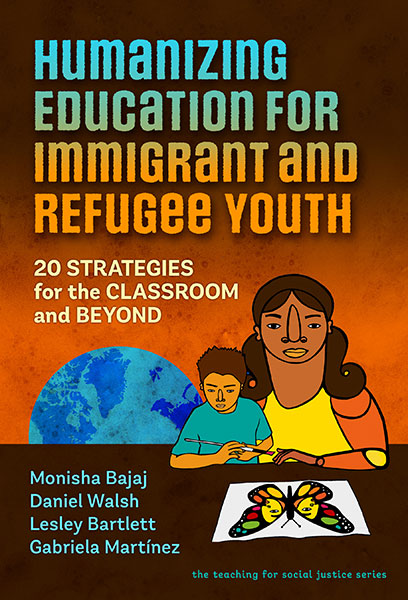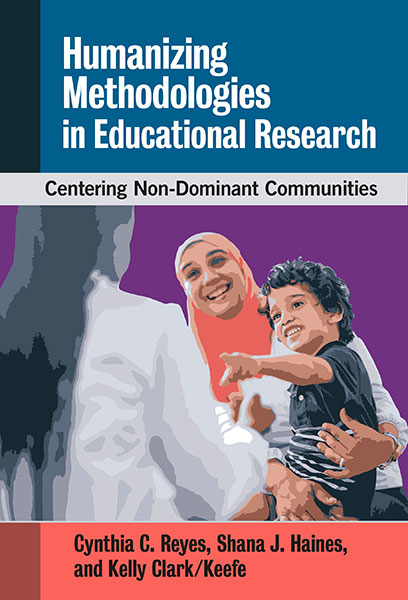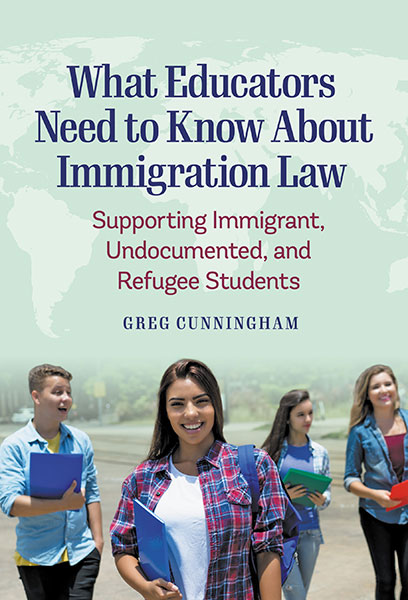On this World Refugee Day, tools and resources to support refugee students are needed more than ever. Here are some important books that will guide educators to help refugee learners at all levels succeed:

Humanizing Education for Immigrant and Refugee Youth
20 Strategies for the Classroom and Beyond
Monisha Bajaj, Daniel Walsh, Lesley Bartlett, and Gabriela Martínez
This important book offers strategies, models, and concrete ideas for better serving newcomer immigrant and refugee youth in U.S. schools, with a focus on grades 6–12. The authors present 20 strategies grouped under three categories: (1) classroom and instructional design, (2) school design, and (3) extracurricular, community, and alumni partnerships. Each chapter provides research-based information, classroom examples, tips for implementing each strategy, and additional resources. Readers will find engaging profiles of schools, students, and alumni interspersed throughout the book, offering both varied perspectives and practical advice. Humanizing Education for Immigrant and Refugee Youth will assist today’s educators, school leaders, policymakers, and scholars interested in the holistic success and well-being of immigrant and refugee students.

Humanizing Methodologies in Educational Research
Centering Non-Dominant Communities
Cynthia C. Reyes, Shana J. Haines, and Kelly Clark/Keefe
This guide is for educational researchers interested in conducting ethically sound qualitative studies with diverse populations, including refugees, documented and undocumented immigrants, and people with disabilities. Through a description of a case study with refugee families, their children, school personnel, and liaisons, the authors highlight humanizing methods—a multidirectional and dynamic ethical compass with relationships at the center. Topics in the book include working within the limitations of Institutional Review Board (IRB) standards, using cultural and linguistic liaisons to communicate with research participants, and creating reciprocity with research participants and their families and communities. Through accessible real-world examples, the text covers the full arc of a project, from conceptualization, to navigating human subjects committees, to the complex task of representing ideas to academic and community-based audiences.

What Educators Need to Know About Immigration Law
Supporting Immigrant, Undocumented, and Refugee Students
Greg Cunningham
Millions of students of noncitizen status or with undocumented family members experience financial, cultural, and socioemotional hardships that can result in profoundly adverse effects upon their academic performances and emotional well-being. In turn, teachers, counselors, and school leaders have deep concerns about the impact of immigration law on their students’ lives both within and outside of school. This book answers many questions that educators have asked of the author, who is a former teacher and legal advocate for ELL families, including the differences among immigrant, refugee, green card, and undocumented students; the right of a school to deny immigration officers entry to the building; and the ways that teachers and school leaders can connect families to services that could improve their students’ lives. The author also clears up misconceptions and provides useful information on the specific challenges, dangers, and benefits of each noncitizen category and their impacts on students. He notes protections provided by law, even for the undocumented, with classroom scenarios that bring student issues to life. This essential resource clarifies the law in plain, accessible language with practical suggestions on agencies and resources that schools can access, or direct families to, for advocacy and other supports. It is truly a resource that belongs in every school.
Photo by DISPLACED BY DESIGN
